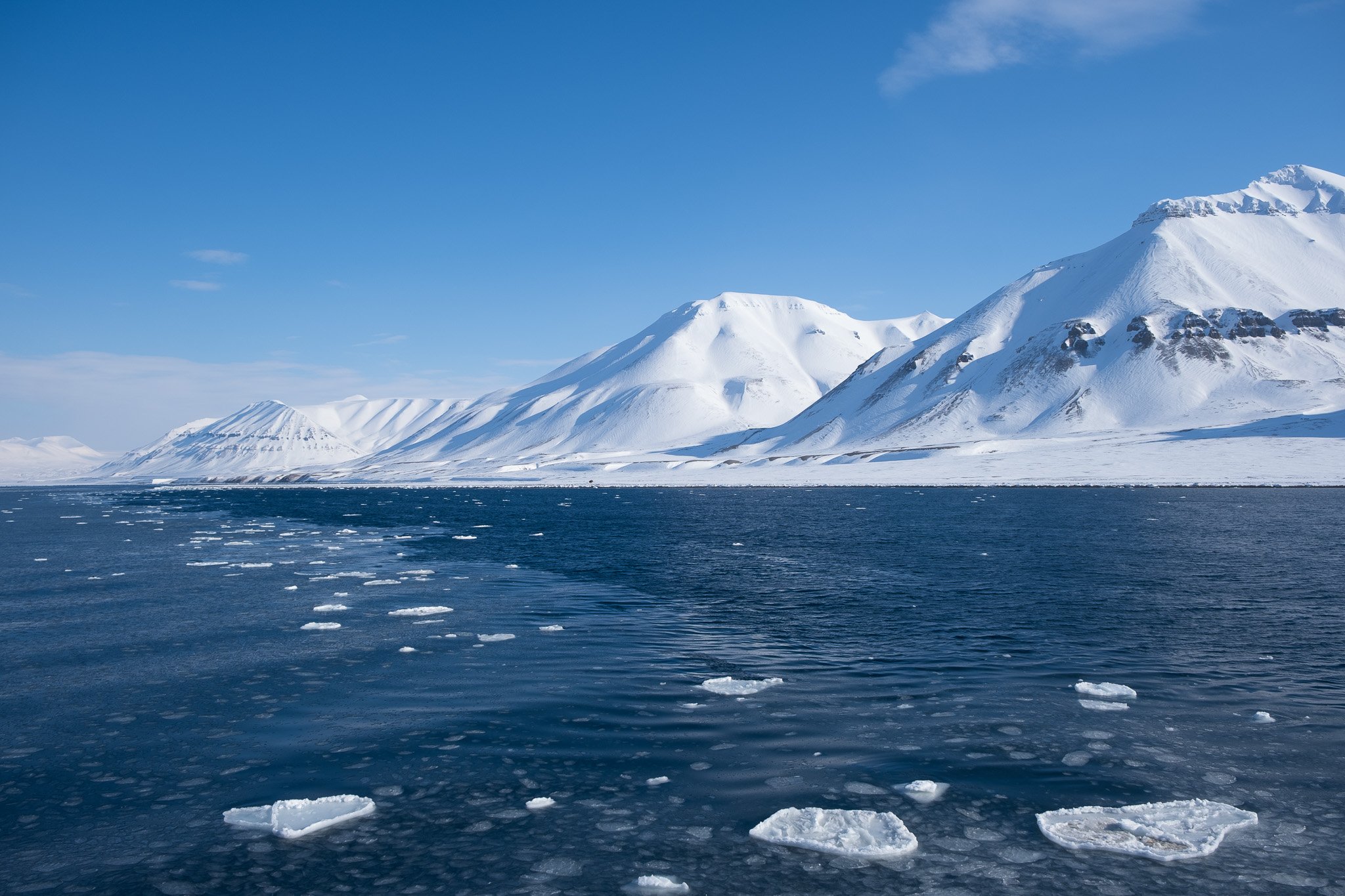Svalbard. Boat trip with Hans
I’ve been staring at the sea and the mountain slopes for a solid couple of hours now, and I can confidently say that three out of five toes in my left foot have gone completely numb. I wonder at which point I should get worried about frostbites. Or should I be worried already?
Maybe I should go back inside, just for a little while. ‘Don’t’, echoes the tiny voice in my head. ‘Not yet.’ So I stay, and start tapping rhythmically my feet on the iron floor of the boat, twirling my toes inside the boot. It kind of works. Plus, I can keep my woollen mittens on and click the shutter button on my camera through a fortunate hole conveniently located right by the finger area.
I’m on a one-day boat tour down Billefjorden, north of Longyearbyen. This morning around 9.30 we sailed out of Longyearbyen port and through Sassenfjorden, and we’ll soon be entering Billefjorden. At the end of the fjord sits Pyramiden, one of the two Soviet settlements on Spitsbergen (the other one being Barentsburg). We won’t make it to Pyramiden, though: it’s still too early in the season to sail down the whole length of the (still) ice-covered fjord.
I’ve positioned myself on the upper deck - that is, what a person with zero knowledge of boat vocabulary would call upper deck. Gulls and fulmars are flying past nonstop, now zooming fast down straight invisible lines in the sky, now floating contentedly as if in slow motion, letting the wind carry them on. Light as feathers, oblivious to the cold humans fight strategic layer over strategic layer here on deck.
Our amazing guide Hans briefly visits us outside as the boat slows down near some dolerite rock formations. He tells us about the birds nesting and breeding on these very rocks every year in late spring: there’s so much to the geology of Svalbard that right now I’m almost ashamed I know so little about rocks. Fast forward half an hour, and here we are all sitting at our lunch tables (inside!), again listening to Hans recount stories of hunters and trappers overwintering in Svalbard throughout the 20th century. I’m enthralled: I want to know more about everything and everyone. I manage a hasty note on my phone right before going back out on deck: Christiane Ritter, ‘A Woman in the Polar Night’. ‘I have to read this book’, I think to myself. I will, and I will love it.
After lunch break I rush up outside back to my usual spot. There’s a point when I’m alone on the whole deck, and I’m not even cold: the air is crisp, icy but balmy: who would guess that the Arctic sun could (also) be so kind?
I eventually resolve to take one short afternoon break from deck watching, and get a hot tea from the cafe. That’s when I bump into Hans one more time. He finds me looking intently at a poster of whale and bird species that populate the Arctic. ‘How do you tell them apart?, I ask about the whales. He says it’s a matter of size, fin shape, colour. He just knows, I can tell. He’s been around here for years, he must know the islands so well. I could listen to all the stories of hunters and trappers he surely knows for the whole day.
It’s a true pleasure to talk to him, meeting him on this boat trip has been a delight, one of the best things about today. By the end of the day, even after getting off the boat for a fjord ice walk and seeing a polar bear, I won’t have changed my mind about that.











